Fish is one of the world's most popular seafood, but what if you ingest a fish scale by accident? Are they edible or safe? Fortunately, we have the answers, and here is what we have discovered.
Fish scales are generally edible. However, if you consume them by mistake, you risk choking.
We'll find out if there are any health benefits of eating fish scales. Continue reading to determine whether you need to scale your fish and how to do so. Continue reading to find out more.
What Are The Nutritional And Health Benefits Of Fish Scales?
People worldwide like eating various types of fish, depending on the variety and dish. When cooking fish, the first thing we do is scrape off and discard the scales.
You might not know that consuming them has any `nutritional benefits. The nutritional properties of fish scales are listed below.
Collagen
Fish scales are high in collagen. Collagen is excellent for strengthening ligaments and bones, as well as for supporting joints. Increasing your collagen intake will help you obtain smoother skin and stronger hair and nails.
Collagen is a peptide used in the medical, health care, nutritional, and ornamental sectors. Marine fish scales are an excellent source of collagen.
It is extracted using a sophisticated enzymatic digestion process. The scales of Sardinella longiceps (Oil Sardine) contain a high amount of collagen.
Omega 3 And Other Healthy Fats
One of the reasons people include fish scales in their meals is that fish is high in omega-3. Fish scales are a great source of fats for your body.
Omega-3 fatty acids are an excellent approach to help develop healthy brain cells, protect your heart, and avoid strokes.
Different Types Of Fish Scales
Fish scales differ in structure and form. Different types of scales in fish are frequently observed as species traits.
Cosmoid
Cosmoid scales, also known as cosmine, are extremely rare on fish. They were a distinguishing feature of several extinct fish, including placoderms and ostracoderms.
You can also find these scales on coelacanths, which are still alive. Lungfish bodies were also found to have cosmoid scales. These scales appear to be semi-circular scales positioned relatively close to one another at first view.
Placoid
These scales are widespread in cartilaginous fish. It can be seen in sharks, skates, and rays. If you examine the skin of a fish with placoid scales, you'll notice that they're pretty close together.
It usually results in a sandpaper-like texture on the surfaces of these fishes.
Ganoid
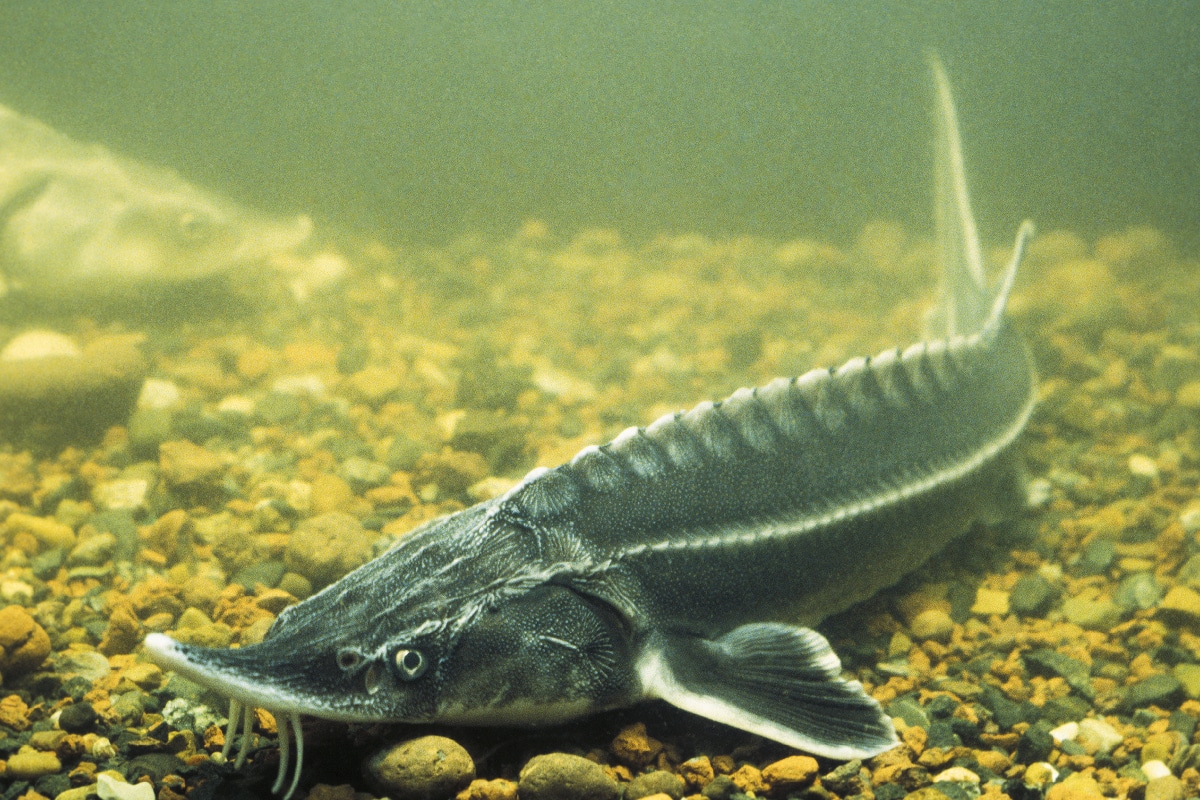
The shape of ganoid scales is similar to that of rhomboids. Peg-and-socket joints link these scales. They have a bony basal layer, a dentin layer, and an outer ganoine layer. Fishes with this scale include bichirs and sturgeon.
Cycloid

As the name implies, Cycloid scales are round, transparent, and thin. The scale's surface layer comprises calcium-based salts, while the inner layer has mainly collagen.
As a fish grows, its scales expand, forming concentric layers similar to tree rings. Scientists count the rings to estimate a fish's age in certain species. This scale is found in lower-order teleost fishes such as rayed fish and salmon.
Do You Need To Scale Your Fish Before Cooking?
Scaling the entire fish is a chore since the scales are unpleasant to eat. However, scaling does not apply to all fish. Certain bottom-feeding fish, such as catfish and bullheads, lack scales.
You also don't want to scale a bigger fish. If your fish is larger than a salad plate, you can filter it without scaling. Scaling only works best on small or medium-sized fish.
How Do You Scale A Fish?
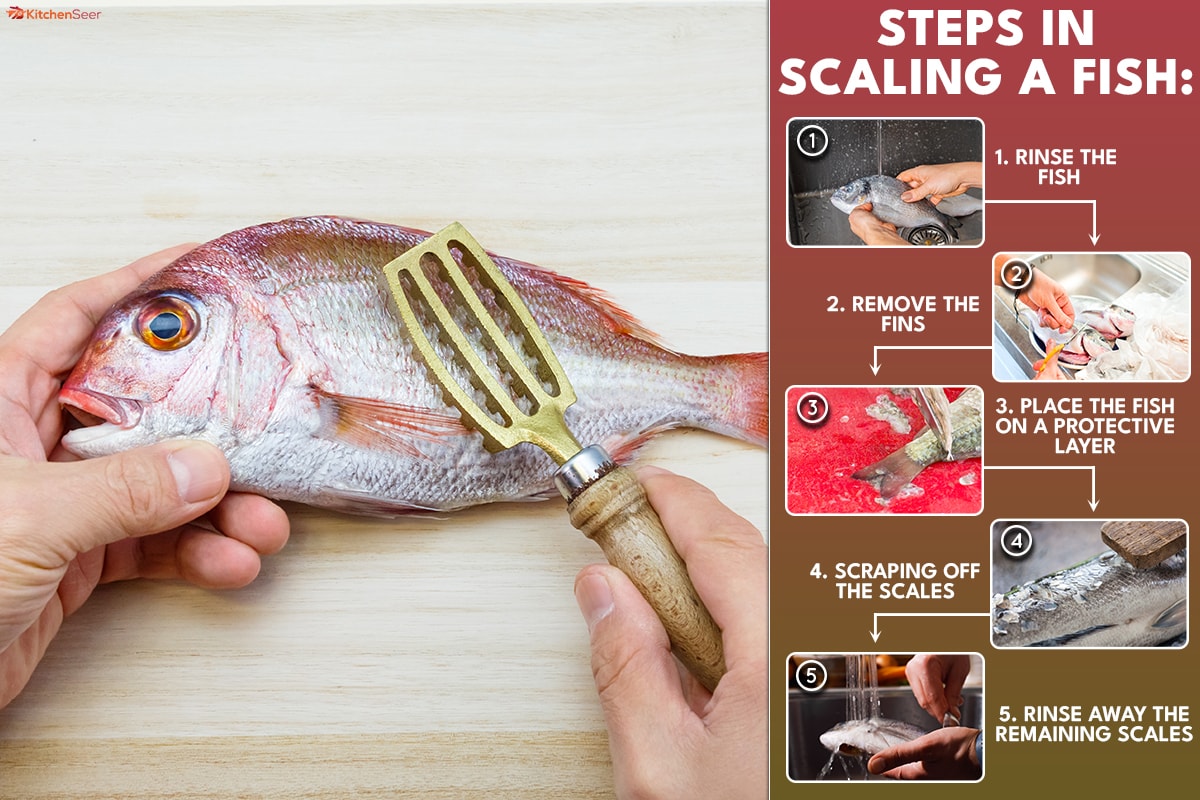
A whole fish makes an excellent and impressive meal, whether in the wilderness or at home.
But before you can cook and consume the fish, you must prepare it, trim the fins, remove the scales, and clean or remove the guts.
1. Rinse The Fish
Rinse your fish well with water before starting to scale it. It removes the slime on the scales. After rinsing the fish, pat it dry with a paper towel.
2. Remove The Fins
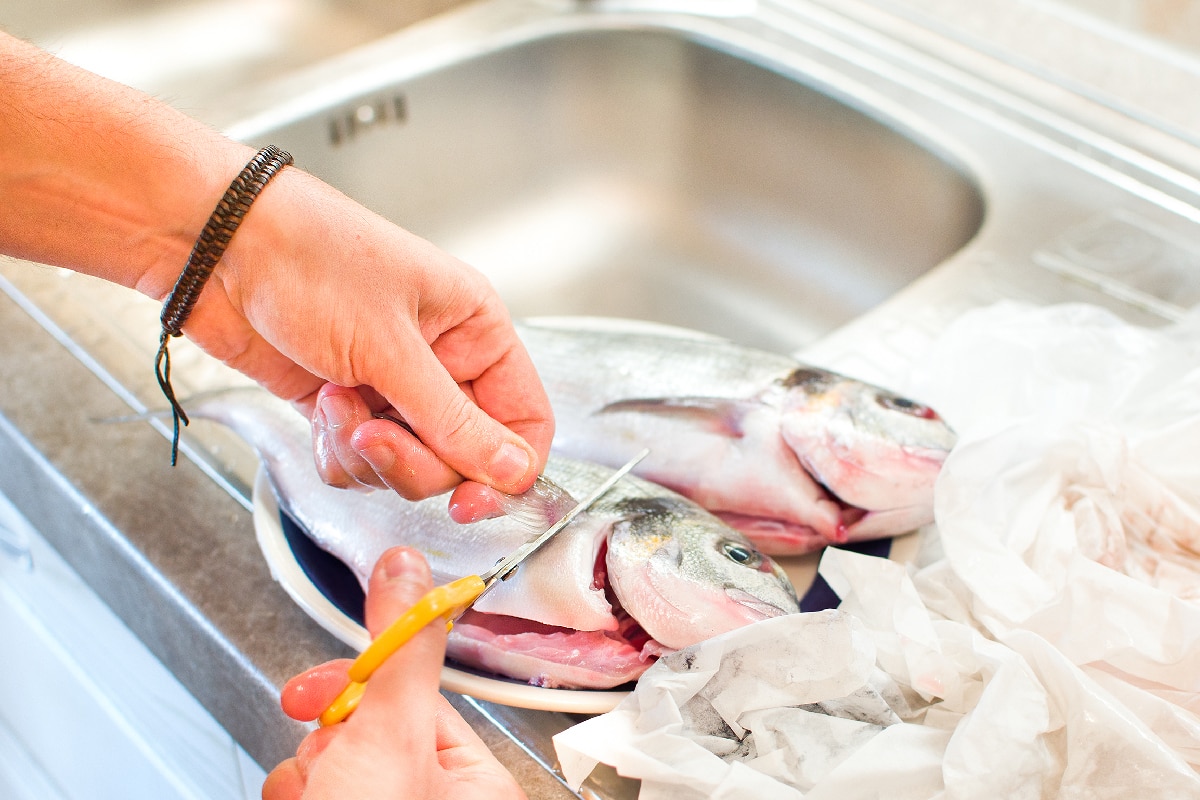
With your kitchen shears, cut off the fins. The dorsal fin is the uppermost fin along the spine, and the pectoral fins are those on the chest. The ventral fins are the belly fins, while the caudal fin is the tail fin.
You'll remove all of these fins as near the body as possible. It is important to note that the dorsal fin, in particular, can have some extremely prickly bones.
Scaling the fish while still connected to the dorsal fin might harm you. With the fins removed, scaling becomes much easy.

Click to see this product on Amazon.
3. Place The Fish On A Protective Layer
Set up a shield that will capture the scales as you remove them. Scales are messy, so you don't want them to get everywhere. Choose something you can toss in the garbage.
Cleaning up will be a snap if you use a newspaper, parchment paper, and cardboard.
4. Scraping Off The Scales
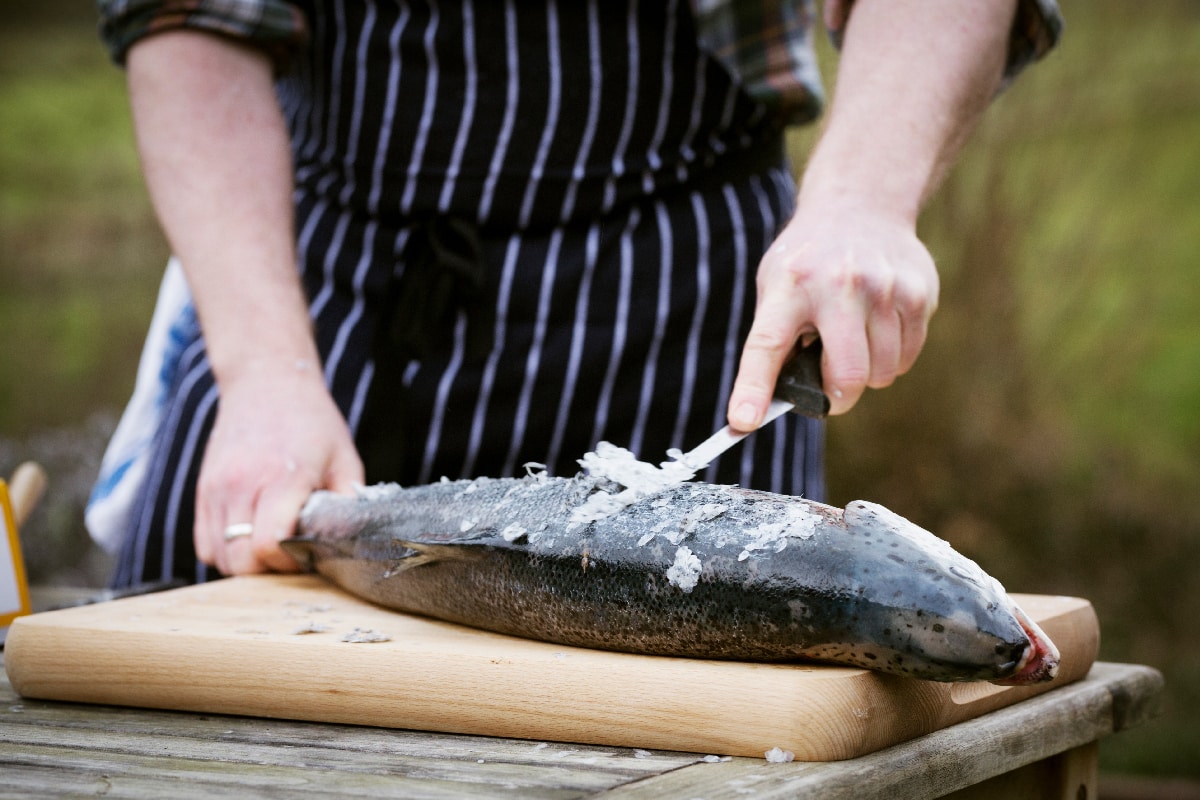
Lay the fish flat on the work surface, but grasp hold of the tail to keep it from slipping about while you remove scales. Safeguard your hands with a pair of disposable gloves.
Use the spine of the knife rather than the sharp edge. Alternatively, if you have a fish scale peeler, you can use it. Maintain a 45-degree angle when holding your knife's spine. Place the knife's spine against the fish's skin near its tail fin.
Rake the knife's spine along the side of the fish, from tail to head. Use long and even strokes. You'll need to apply some pressure, but not much. As you scrape, the scales will begin to fall off.
Continue until no scales remain on that side of the fish. Flip the fish over and repeat on the other side.
Click here to buy this set on Amazon.
5. Rinse Away The Remaining Scales
Hold the fish under cold running water once you have removed the scales with the knife. The water should effectively remove any remaining scales from the fish. Rinse until there are no more scales.
How Should You Remove Fish Guts?
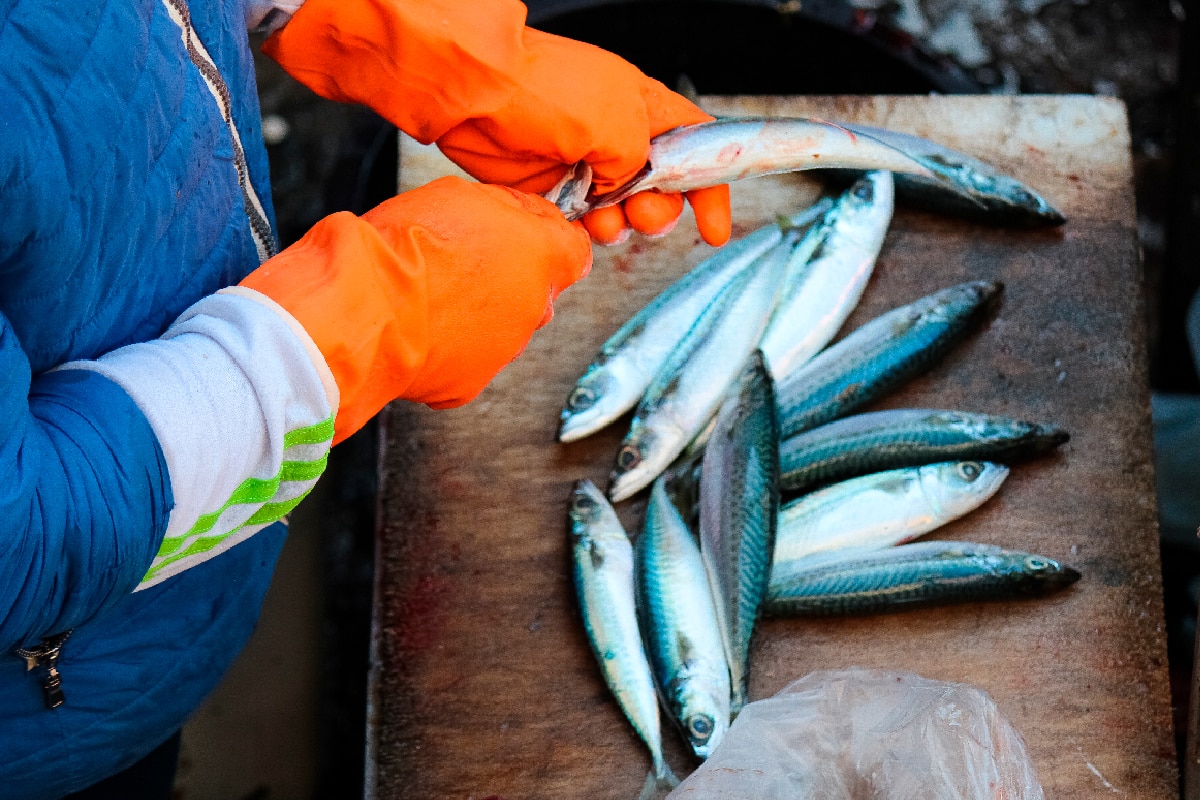
A fish's guts are inedible and must be removed before cooking. Wear latex gloves to protect your hands while performing this task. The steps for removing fish guts are as follows.
1. Spread Out Another Piece Of Paper
Place another layer of newspaper on top, followed by the cutting board and the fish.
2. Slide The Knife Into The Fish Vent
Line up your fish on a firm cutting surface with the belly towards you. Tilt the fish at a 45-degree angle, with the head pointing away from you.
Slide the tip of the knife into the anus of the fish, the sharp edge towards the fish's head. Depending on the size of your catch, insert it one or two inches into the vent.
3. Cut Your Way Up Towards The Neck
Maintain a firm grip on your knife as you slip it into the fish's vent. Continue to cut until you reach the fish's mouth. Make sure not to cut too far into the fish's belly.
If you burst the intestines, you'll wind up with a terrible mess inside your fish. Moreover, if you remove the head later, you can cut through the neck and gills as you finish the cut.
4. Scoop The Gills and Entrails
Scoop out the entrails by spreading the body open. Find the anus of the fish and cut it in a "V" or notch form. Make sure you also remove the kidney.
If the fish has a kidney, it will be located higher up along the backbone. Scrap it out with a spoon and wrap everything and throw it away.
5. Rinse Your Fish
Place your fish in a big sink or washing area, vent side up. Turn on a steady flow of cold water and open the stomach. Allow water to flow through your fish's abdominal cavity.
It would help if you rubbed the internal walls of its body with your hands or a spoon. Clean the fish thoroughly and remove any lingering residue from the organs.
6. Clean Your Area
Maintain reasonable health procedures and keep your working area clean. Collect the intestines, head, and scales and place them in a rubbish bin after wrapping them in the newspaper.



![Portrait of a dying Black Drum fish caught with a hook where the line, lead and some blood can be seen. - Can You Eat A Black Drum Fish? [Yes! Here's How To Prepare It!]](https://kitchenseer.com/wp-content/uploads/2022/10/Portrait-of-a-dying-Black-Drum-fish-caught-with-a-hook-where-the-line-lead-and-some-blood-can-be-seen.-Can-You-Eat-A-Black-Drum-Fish-Ye-250x250.jpg)


![Raw barracuda fillet with chili paste, spicy flavor, Can You Eat A Barracuda? [Yes! Important Tips On Preparing It Safely!]](https://kitchenseer.com/wp-content/uploads/2022/10/Raw-barracuda-fillet-with-chili-paste-spicy-flavor-250x250.jpg)
![Serve seabass baked with potatoes and tomatoes, What Kind Of Fish Is A Branzino? [& Is It Edible]](https://kitchenseer.com/wp-content/uploads/2022/10/Serve-seabass-baked-with-potatoes-and-tomatoes-250x250.jpg)
